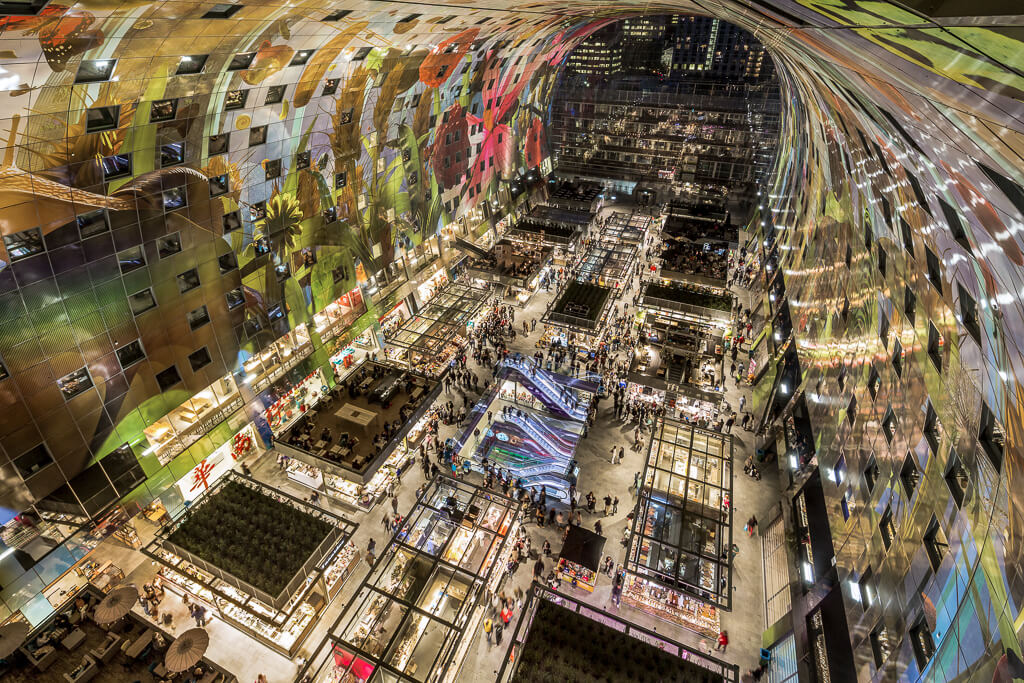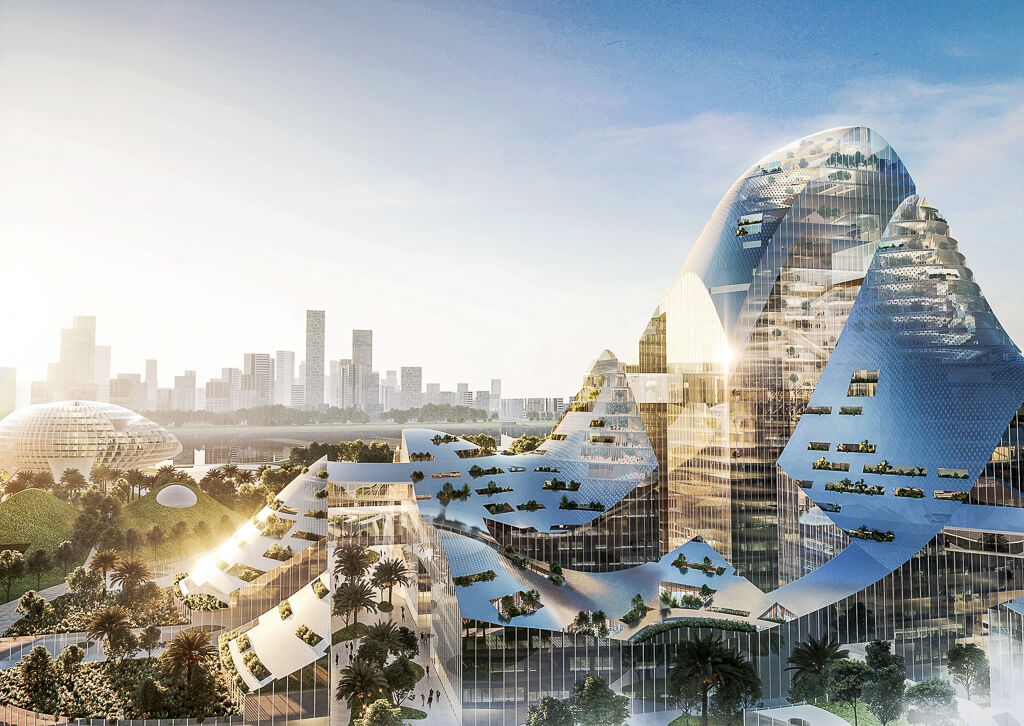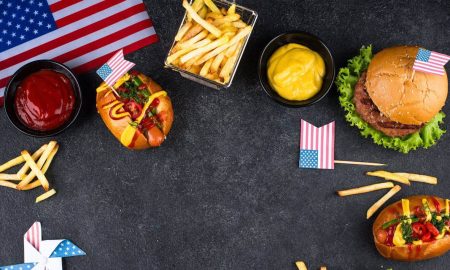But Knikker advocates for his ideas with vigor and determination. He is a partner at MVRDV Architects, heads the Strategy & Development department at the Rotterdam headquarters; as the spokesperson for the internationally successful architecture firm, he is advocating an about-face towards taking more initiative, using more outdoor space and increasing concentration and diversity in inner-city spaces.
With over 250 employees worldwide and branches in China, France and Germany, MVRDV has been making its mark in international urban planning since 1993. Much of their fame came from Rotterdam Market Hall, which drew between eight and nine million visitors a year before Corona. In a Zoom interview from his home office in The Hague, Jan Knikker reveals what awaits cities after the pandemic, what MVRDV would like to do about it with the vertical village concept and what the gastronomy of the future should be like.

Jan Knikker | Image: Allard van der Hoek
Jan Knikker, food-related topics are your passion. Why?
Well, food has a lot to do with the human psyche, I find that very exciting. In this respect, the social aspects of gastronomy appeal to me. I also love to cook myself – communal meals create a sense of hominess. Because of this, I would say there are a lot of good reasons for me to be excited about food-related topics.
MVRDV gained recognition thanks in no small part to Rotterdam Market Hall. What was so special about this project?
The market hall is exceptional simply because we used a trick to have more funds available than usual. Since sales in market halls are comparatively low, funding is often rather modest. We got the opportunity to connect two apartment buildings with 224 apartments in a horseshoe shape on the 10th floor and to glaze both sides of the huge hall, which was therefore created practically free of charge. In the end, it got the feel of a Victorian train station, a great ambiance. This is also thanks to Arno Coenen’s 11,000-square-foot wall and ceiling painting, a modern interpretation of the still lifes of Dutch masters. This has created an appealing community meeting place. There is a floor with gastronomic offerings above the ground level market, a supermarket in the basement and an underground parking lot for 1200 cars.

Markthall a sustainable combination of food, leisure, living, and parking | Image: MVRDV
MVRDV is also known for urban and city planning related work. How do you approach developing new neighborhoods like this?
Since we are operating all over the world, we can identify trends at an early stage. The fact that the retail sector is on the verge of a transformation was clear even before Corona. Medium-sized retailers in particular have increasingly disappeared from city centers, which can be traced back to changes in purchasing behavior. Today, many customers shop either at discount stores or very exclusive and high-end shops, often combining the two. Department stores and family businesses are not very popular. However, these time-honored, mid-priced retailers are what make downtowns distinct. In places where they depart, desolation looms; it results in vacancies and a monotonous mix of the stores that do remain.
How can this development be dealt with?
By making city centers welcoming again, following the example of cities like Copenhagen or Barcelona. In those places, you can walk to everything in 15 minutes and different neighborhoods intermingle. The modernist ideal of the clean separation of living areas set forth by Le Corbusier is, in our opinion, outdated. This is especially true as a new generation is emerging, one that is less reliant on cars and is seeking experiences rather than pure consumption. Therefore, shopping ghettos no longer work. For example, on London’s Oxford Street, which is currently being transformed into a pedestrian zone, retail space is now being converted into living space. You can also consider setting up university lecture halls in former department stores.

EXPO PAVILION 2.0 the former Expo Pavilion into a co-working office building, and two new buildings will be added on the space surrounding the pavilion | Image: MVRDV
You recommend a colorful mix – residential, restaurants, artisan businesses, retail – and plenty of green in between. How can this be achieved in the short term?
In architecture, nothing happens quickly at all. Our current plans will be realized in five or ten years. Therefore, we always have to anticipate the future a bit and design the projects flexibly.
Don’t such structures also have to develop organically?
Yes, but the built-in flexibility is helpful. The places we design can be used individually as housing, gastronomy or for retail. This is not a new invention – it has been done in the past and has resulted in more diverse neighborhoods. We call it the vertical village.
So you’re travelling back to the future?
Yes, creating a new future with values from the past, perhaps that’s how you could sum up our intentions.

Peruri 88 combines Jakarta´s need for green space with its need for higher densities | Image: MVRDV
Gastronomy is crucial in ensuring a vibrant downtown. What does good gastronomy look like?
With the departure of the middle-class retail trade, gastronomy has taken on a very important function. It acts like a blast of fresh air and vitality for the city. The important thing here is that it takes over outdoor areas. This can also be done in an informal way, as long as the residents don’t have a problem with it. The bottom line is that a neighborhood with more outdoor dining is simply more attractive. It will be safer, there will be more social control, it will be cozier – I’d rather have people eating outside my front door than cars driving by looking for parking.
What do attractive restaurant exteriors look like?
There are predictions that the Corona pandemic will have a lasting impact on the design of outdoor areas. People may not want to sit so close together in the future. Parking spaces should give way to outdoor areas and playgrounds. There should be more pedestrian zones. To help advance such things, we’ re also working with cities to develop pedestrian-friendly transportation plans.
Can you think of an example from the restaurant industry where you think a new approach has already been successfully implemented?
In Amsterdam, some time ago, they opened a club and restaurant for temporary use on the top floor of a vacant building. The location was setup and decorated with the simplest of means, but eating there was a real experience. I could also imagine something like this in empty Karstadt department stores.

TENCENT CAMPUS an entire urban district including offices, homes for Tencent employees, commercial units, public amenities, schools, and a conference centre. | Image: Atchain, MVRDV
There is a theory that after Corona, less people will go to restaurants.
Opinions are divided on this. Some are saying that everything will go back to the way it was. I think the same is also true for tourism. However, other people are saying that they have now learned to cook themselves, have gotten used to delivery services and would like to spend less money on traditional gastronomy. This is also a possible outcome. In my view, however, this will not affect the traditional going-out countries such as Spain and Italy. After the First World War, Europe was hit by the Spanish flu. Then the Roaring Twenties arrived – that’s a thought that gives me confidence. Because that means we need completely new, fantastic restaurant concepts that promise an experience as well as enjoyment.
And what about sustainability?
In this respect, the Netherlands is highly innovative. For example, festivals use tents made from organic materials that are later composted. There are a lot of exciting approaches and ideas. When we not only eat in vegan restaurants, but also dance on floors that convert our energy into electricity, we will be able to do so with a clear conscience.
















